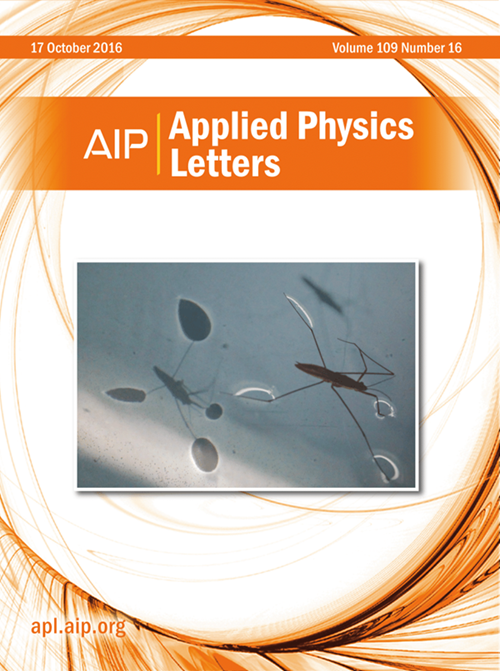Tunable thermal expansion from positive, zero to negative in RbMgInMo3O12 with NASICON structure
IF 3.5
2区 物理与天体物理
Q2 PHYSICS, APPLIED
引用次数: 0
Abstract
Precise control of thermal expansion is important for open-framework structure materials and full of challenges. The present work designs a feasible strategy to achieve the thermal expansion from positive to zero and negative in NASICON structure molybdates by part removing Rb ions in the RbMgInMo3O12 framework. The removal of alkali metal ions Rb+ reduces the number of Rb–O bonds that contribute to positive thermal expansion along the c-axis direction and expands the average atomic volume of the framework structure. This structural modification facilitates coupling oscillations between polyhedra, significantly reducing the coefficient of thermal expansion along the c-axis. Meanwhile, the coefficient of thermal expansion of the ab-plane remains essentially unchanged. Consequently, the thermal expansion of RbxMgxIn2-xMo3O12 is effectively modulated from positive (αv = 3.3 × 10−6 K−1) to zero (αv = 1.0 × 10−6 K−1) and negative thermal expansion (αv = −2.7 × 10−6 K−1). This work not only reports the interesting zero and negative thermal expansion functional materials but also gives one way to design more negative thermal expansion materials with the open-framework structure.具有NASICON结构的RbMgInMo3O12的正、零、负热膨胀可调
对开放框架结构材料的热膨胀进行精确控制是非常重要的,也是非常具有挑战性的。本工作设计了一种可行的策略,通过去除RbMgInMo3O12框架中的Rb离子来实现NASICON结构钼酸盐从正到零和负的热膨胀。碱金属离子Rb+的去除减少了Rb - o键的数量,这些键有助于沿c轴方向的正热膨胀,并扩大了框架结构的平均原子体积。这种结构的改变有利于多面体之间的耦合振荡,显著降低了沿c轴的热膨胀系数。同时,ab平面的热膨胀系数基本保持不变。因此,RbxMgxIn2-xMo3O12的热膨胀被有效地从正(αv = 3.3 × 10−6 K−1)调制到零(αv = 1.0 × 10−6 K−1)和负热膨胀(αv =−2.7 × 10−6 K−1)。本工作不仅报道了有趣的零热膨胀和负热膨胀功能材料,而且为设计更多具有开放框架结构的负热膨胀材料提供了一条途径。
本文章由计算机程序翻译,如有差异,请以英文原文为准。
求助全文
约1分钟内获得全文
求助全文
来源期刊

Applied Physics Letters
物理-物理:应用
CiteScore
6.40
自引率
10.00%
发文量
1821
审稿时长
1.6 months
期刊介绍:
Applied Physics Letters (APL) features concise, up-to-date reports on significant new findings in applied physics. Emphasizing rapid dissemination of key data and new physical insights, APL offers prompt publication of new experimental and theoretical papers reporting applications of physics phenomena to all branches of science, engineering, and modern technology.
In addition to regular articles, the journal also publishes invited Fast Track, Perspectives, and in-depth Editorials which report on cutting-edge areas in applied physics.
APL Perspectives are forward-looking invited letters which highlight recent developments or discoveries. Emphasis is placed on very recent developments, potentially disruptive technologies, open questions and possible solutions. They also include a mini-roadmap detailing where the community should direct efforts in order for the phenomena to be viable for application and the challenges associated with meeting that performance threshold. Perspectives are characterized by personal viewpoints and opinions of recognized experts in the field.
Fast Track articles are invited original research articles that report results that are particularly novel and important or provide a significant advancement in an emerging field. Because of the urgency and scientific importance of the work, the peer review process is accelerated. If, during the review process, it becomes apparent that the paper does not meet the Fast Track criterion, it is returned to a normal track.
 求助内容:
求助内容: 应助结果提醒方式:
应助结果提醒方式:


